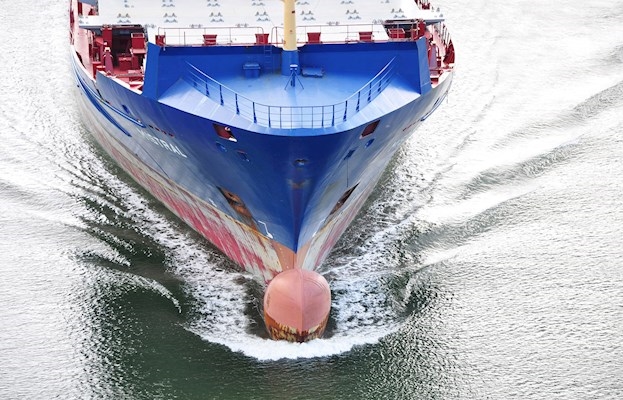Mandatory EEDI
The shipbuilding industries focus their new ship designs towards improved fuel efficiency and reduced footprint emissions.
After its introduction by the Marine Environmental Protection Committee (MEPC) to the International Maritime Organization (IMO), the calculation and the verification process of the Energy Efficiency Design Index (EEDI) has been mandatory since January 1st 2014.
EEDI tailored model testing
The quality and accuracy of model test results play a large role in the outcome of full-scale speed/power (S/P) trials (final stage of the verification process). For some ship types, sea trials are normally carried out in ballast condition whereas the contractual/EEDI condition is normally defined in loaded design condition. For the conversion from ballast trial results to loaded condition, the difference between the ballast and loaded model test power curves is used. Therefore, an accurate model test and validated consistent extrapolation method to full-scale is very important.
For the analysis of the S/P trials, i.e. to include the effect of the propeller loading in non-ideal conditions on the propulsion efficiency and propeller revolutions, the model self-propulsion test data must include the results of propeller load variation measurements.
Based on the latest International Towing Tank Conference (ITTC) recommendations, the model tests must be conducted according to the following criteria:
- Model tests must be conducted at the contract draught and trim, the EEDI draught and trim as well as the trial draught
- and trim.
- Model tests must be conducted according to the ITTC Recommended Procedures for Resistance and Propulsion Model-Tests, including load variation tests.
- For all draughts and trims, the same methods, procedures and empirical coefficients must be used to extrapolate the model-scale values to full-scale. In case different methods, procedures or empirical coefficients are used for the different draughts, these must be documented in full detail, and the documentation must include justification by means of full-scale S/P trial data for the specific ship type, size, loading condition as well as model test facility and evaluation method.
- The speed trial prediction should always be based on a resistance, a propulsion, and a propeller open water test of the model propeller used during the tests as well as the propeller open water characteristics of the final propeller.
- The model test report must be transparent and give sufficient information to enable the EEDI verifier to check the model test results. This means that in the model test report, the measured data, the predicted full-scale data and a detailed description of the extrapolation method and the coefficients used have to be reported.
FORCE Technology EEDI testing references
Since January 1st 2013 FORCE Technology has been involved in several model testing projects related to the EEDI verification process. All these were witnessed and verified by the appointed Classification Society verifier. We have been working with numerous class societies in the verification processes, including but not limited to Germanisher Lloyd (GL), Korean Register of Shipping (KR) and DNV-GL. The results of the verifications were specified in the relevant witness protocols, documenting compliance of the tests and prediction results (power curves) with established standard practice.FORCE Technology EEDI verification and S/P trial services
FORCE Technology is fully capable and geared to meet all the requirements for model testing within the EEDI verification process scope. This capability is based on our up-to-date hydrodynamic facility, updated state of the art model building capacity, measuring instrumentation and ITTC compliance model testing procedures and powering performance analysis. Furthermore, FORCE Technology is well equipped with hardware and software to participate in the vessel sea trial verification process, either as a main performer of the sea trial or as a third party evaluator of the sea trial results and analyses. The latter approach has already been applied successfully onboard a number of bulk carriers for a major Danish ship operator.
Case
EEDI Verification
The Energy Efficiency Design Index is a means to support and push the development and innovation to develop more energy efficient ships.


